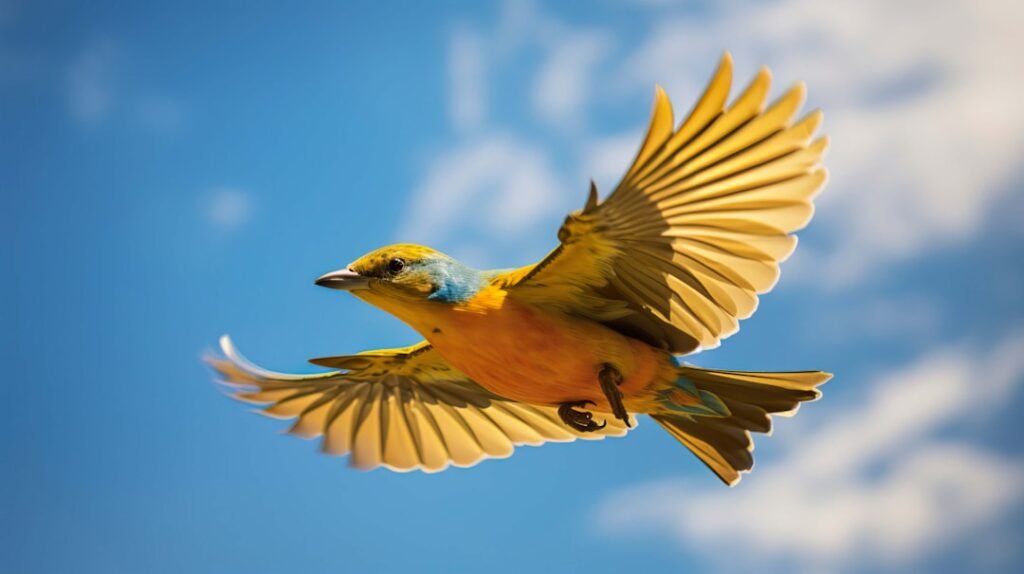Birds possess one of nature’s most remarkable abilities: the power to navigate across vast distances using Earth’s magnetic field as their guide. This extraordinary sense, known as magnetoreception, has fascinated scientists for decades. From tiny songbirds to massive seabirds, millions of feathered travelers rely on this invisible compass to find their way across continents and oceans.
The secret lies in specialized proteins in their eyes and tiny magnetic particles in their beaks. These birds make use of cryptochrome proteins in their retinas, which rely on quantum radical-pair mechanisms to perceive magnetic fields. It’s like having a built-in GPS system that never needs satellite signals or battery power.
So let’s get started and discover which birds have mastered this incredible navigational skill.
European Robin

The European Robin stands as one of the most studied examples of avian magnetoreception. The robin Cry4a protein is much more sensitive to magnetic fields than similar proteins from pigeons and chickens, which are non-migratory, hinting that evolution might have optimized robin Cry4a for navigation. Scientists first discovered the magnetic compass ability in birds through studying these small songbirds back in the 1960s.
European Robins oriented their migratory activity in test cages in their normal migratory direction, and when magnetic North was deflected by Helmholtz coils, they shifted their headings accordingly. This was the first demonstration that animals could use the geomagnetic field for a compass. These findings revolutionized our understanding of animal navigation.
Arctic Tern

The Arctic Tern holds the record for the longest migration of any bird on Earth. They travel from breeding grounds in the high Arctic to their southern habitat in Antarctica and back – a one-way distance of approximately 35,000-40,000 kilometres, with the pay-off that the tern sees two summers each year and ensures a continuous food supply. This incredible journey showcases magnetoreception at its most impressive scale.
The Arctic Tern embarks on the longest migration of any bird, traveling from the Arctic to the Antarctic and back each year, covering around 44,000 miles annually. This incredible journey is driven by an innate sense of direction that guides it across hemispheres with unrivaled precision. Their magnetic navigation system must work flawlessly to complete such an epic voyage.
Homing Pigeon

Homing pigeons have earned legendary status for their navigation abilities. Homing pigeons earned their name through an ability to “home” in on their lofts, and return to them from hundreds of miles away. Homing pigeons had long been thought to navigate either by scent or magnetic attraction. These birds have been used for centuries to carry messages across vast distances.
In 2003, researchers found iron-based receptors in the upper beaks of homing pigeons, both seemingly connected to the animal’s trigeminal nerve. Researchers found that they could train pigeons to recognize when an anomalous magnetic field was present – the birds would hop to one end of the cage when the field was normal and to the other when the field became abnormal. In other words, they were detecting differences in the magnetic field.
Bobolink

The Bobolink represents another fascinating example of magnetic navigation in songbirds. Magnetic responses of the trigeminal nerve system of the bobolink have been documented, showing responses to small magnetic variations by the trigeminal system. This blackbird species undertakes impressive migrations from North America to South America.
The bobolink uses an inclination compass during migratory orientation. Their ability to detect magnetic field inclination helps them maintain proper direction during their long seasonal journeys. These birds demonstrate how even smaller songbirds can master complex magnetic navigation techniques.
Silvereye

The Silvereye, a small passerine bird from the Southern Hemisphere, has provided researchers with valuable insights into magnetoreception. A pulse of magnetic field was able to disorient silvereyes, a Southern Hemisphere migratory bird. Only adults appeared to be affected by the pulse, perhaps because juvenile birds rely on an innate mechanism for their heading whereas adults have constructed a navigational map.
European robins can orient well in blue or green light but are disorientated in red or yellow-orange light. Similar results were found for Australian silvereyes. These results suggest that illumination with blue/green light is necessary for the birds to extract information from the magnetic field. This light dependency reveals the quantum nature of their magnetic sensing system.
Reed Warbler

Reed Warblers have become important model species for studying magnetic navigation in night-migrating birds. Reed warblers represent a well-established model species for studies on navigation in night migrating passerine birds. These small songbirds undertake remarkable journeys between their breeding and wintering grounds.
A significant body of evidence now supports the use of cues derived from Earth’s magnetic field for determining position in several bird species, and current results further corroborate the role of a magnetic map for navigation in night-migratory songbirds. The present study suggests that reed warblers can use a combination of magnetic inclination and magnetic declination alone to determine their approximate position relative to their goal.
Garden Warbler

Garden Warblers join the impressive list of songbirds that use magnetoreception for navigation. Both Cry1 and Cry2 have been implicated in magnetoreception, the former in garden warblers. These small birds make incredible journeys across Europe and Africa during their seasonal migrations.
Like other night-migrating warblers, Garden Warblers rely heavily on their magnetic compass when celestial cues are unavailable. Their ability to detect magnetic fields becomes particularly crucial during overcast nights when stars aren’t visible. This backup navigation system ensures they can continue their journey regardless of weather conditions.
Zebra Finch

Zebra Finches have provided scientists with important insights into the molecular basis of magnetoreception. Researchers from Lund University studied zebra finches, measuring gene expression of three cryptochromes in the brains, muscles and eyes. They found that Cry1 and Cry2 fluctuated daily but Cry4 expressed at constant levels, making it the most likely candidate for magnetoreception.
Magnetic conditioning experiments were successful in Zebra Finches, and a magnetic compass could be demonstrated in this non-migratory species. This discovery showed that magnetoreception isn’t limited to long-distance migrants but exists across many bird species.
Domestic Chicken

Even Domestic Chickens possess the ability to sense magnetic fields. Successful magnetic conditioning experiments were possible in Domestic Chickens, and a magnetic compass could be demonstrated in non-migratory avian species. The magnetic compass thus appears to be a general feature of birds. This finding revolutionized our understanding of how widespread magnetoreception is among birds.
Chickens orient using a magnetic compass. Though they don’t migrate like their wild relatives, chickens retain the ancient ability to detect Earth’s magnetic field. This suggests that magnetoreception evolved early in bird evolution and remains present even in domesticated species.
Manx Shearwater

The Manx Shearwater demonstrates remarkable navigation abilities across ocean environments. Ronald Lockley demonstrated that a small seabird, the Manx shearwater, could orient itself and fly home at full speed, when released far from home, provided either the Sun or the stars were visible. These seabirds spend most of their lives over open ocean, making navigation skills absolutely critical.
Shearwaters face unique challenges navigating over featureless ocean waters where landmarks don’t exist. Their magnetic sense likely works in combination with other navigational cues to help them find their way back to specific nesting islands. This ability allows them to exploit food resources across vast ocean territories while still returning to breed.
Conclusion

The world of avian magnetoreception reveals nature’s incredible ingenuity in solving navigation challenges. More than 50 avian species have been shown to use a magnetic compass, and this number continues to grow as researchers discover more about this remarkable sense. From quantum processes in the eye to magnetic particles in the beak, birds have evolved multiple ways to tap into Earth’s magnetic field.
These discoveries fundamentally changed our understanding of animal navigation. Although the ability to sense direction is important in migratory navigation, many animals have the ability to sense small fluctuations in earth’s magnetic field to map their position to within a few kilometers. Birds don’t just use magnetism as a simple compass – they create detailed magnetic maps of the world.
The study of magnetoreception continues to unlock secrets about one of biology’s most fascinating phenomena. What do you think about these incredible navigation abilities? Tell us in the comments.

Jan loves Wildlife and Animals and is one of the founders of Animals Around The Globe. He holds an MSc in Finance & Economics and is a passionate PADI Open Water Diver. His favorite animals are Mountain Gorillas, Tigers, and Great White Sharks. He lived in South Africa, Germany, the USA, Ireland, Italy, China, and Australia. Before AATG, Jan worked for Google, Axel Springer, BMW and others.




